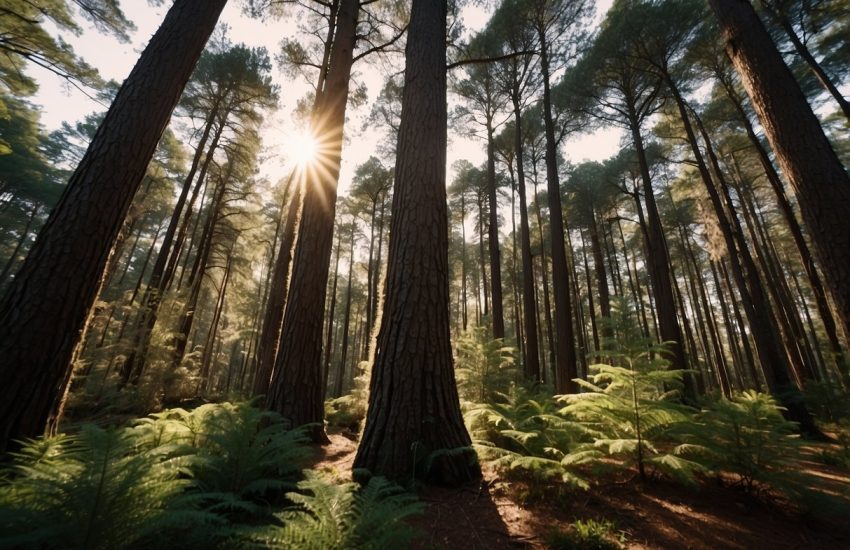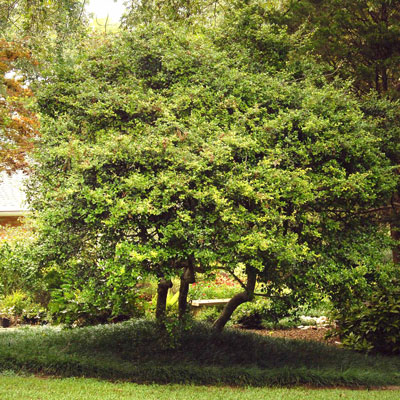Pine Trees in Seattle: A Guide to the City’s Native Species
Seattle, located in the Pacific Northwest region of the United States, is known for its lush greenery and towering trees. Among these trees are the iconic pine trees, which can be found in various parts of the city. The genus Pinus, which includes several species of pine trees, is particularly well-suited to the area’s climate and soil conditions.

One of the most common pine trees found in Seattle is the Douglas fir, which is actually a type of pine tree despite its name. These trees can grow up to 330 feet tall and are known for their distinctive cones and needles. Other species of pine trees that can be found in Seattle include the Western white pine and the Lodgepole pine.
Pine trees in Seattle not only add to the city’s natural beauty, but they also play an important role in the local ecosystem. They provide habitat for a variety of wildlife, such as birds and squirrels, and help to purify the air and water. Additionally, pine trees are often used for timber and other commercial purposes in the Pacific Northwest region.
Pine Trees in Seattle’s Landscape
Seattle’s landscape is characterized by several species of pine trees, which are evergreen trees that retain their leaves throughout the year. These trees are an essential part of the city’s ecosystem, providing shade, shelter, and aesthetic appeal. In this section, we will explore some of the common species of pine trees found in Seattle, their environmental adaptations, and how to cultivate and care for them.
Common Species and Their Characteristics
Seattle is home to several species of pine trees, including the Shore Pine, Ponderosa Pine, and Western White Pine. The Shore Pine is a small tree that grows up to 30 feet tall and is well-suited to the coastal climate of Washington State. Its needles are short and twisted, and its cones are small and egg-shaped.
The Ponderosa Pine is a large tree that can grow up to 200 feet tall. It has long needles that can reach up to 10 inches in length and large, woody cones. The Western White Pine is another large tree that can grow up to 200 feet tall. It has soft, bluish-green needles and long, slender cones.
Environmental Adaptations
Pine trees are highly adaptable to different environmental conditions. They can grow in full sun or partial shade and can tolerate both dry and moist soils. However, they do not do well in areas with high levels of drought or wind.
To ensure the health of your pine trees, it is essential to consider their adaptability when planting them. Choose a location that provides the right amount of sunlight and well-drained soil. Additionally, regular pruning can help maintain the shape and health of the tree.
Cultivation and Care
When planting pine trees, it is important to provide them with adequate space to grow. Ensure that the soil is well-drained and that the tree is planted at the appropriate depth. Water the tree regularly, especially during the first few years of growth.
Pine trees do not require a lot of maintenance, but regular pruning can help maintain their shape and health. It is important to prune them during the dormant season to avoid damaging the tree. Additionally, fertilizing the tree once a year can help it grow and thrive.
In conclusion, pine trees are an essential part of Seattle’s landscape, providing shade, shelter, and aesthetic appeal. By understanding their characteristics, environmental adaptations, and how to cultivate and care for them, you can ensure the health and longevity of these beautiful trees.
Ecological Significance and Uses

Habitat and Wildlife
Pine trees are a common sight in Seattle’s natural habitats, particularly in the Pacific Northwest region. These conifers provide a vital habitat for many native bird species, such as the Pine Siskin and the Red Crossbill, which rely on pine cones as a food source. Additionally, pine trees provide shelter for other wildlife, such as squirrels and chipmunks.
Economic and Cultural Importance
Pine trees have significant economic and cultural importance in Seattle and the Pacific Northwest. Historically, pine trees were used for their timber, which was used in construction and furniture-making. Today, the timber industry still relies on pine trees for lumber and paper production.
Pine trees also have cultural significance in Seattle’s Japanese gardens, where they are often featured for their aesthetic beauty. In Japan and China, pine trees have been used for centuries in traditional medicine, and the resin from pine trees has been used for its antiseptic properties. Pine resin has also been used to make turpentine and other products.
In addition to their aesthetic and cultural significance, pine trees have practical uses as well. Pine needles and cones can be used as fuel for fires, and the resin can be used to make waterproofing materials. Overall, pine trees are an important part of Seattle’s ecosystem and have a variety of uses and benefits.


